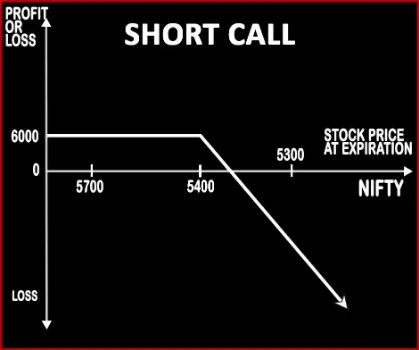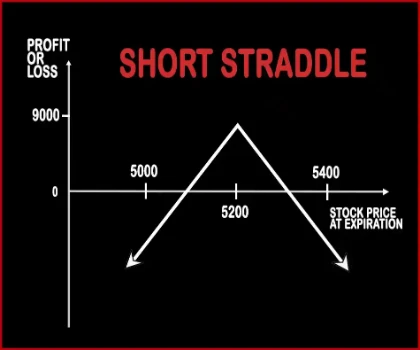Compare Strategies
| SHORT CALL | SHORT STRADDLE | |
|---|---|---|

|

|
|
| About Strategy |
Short Call Option StrategyA trader shorts or writes a Call Option when he feels that underlying stock price is likely to go down. Selling Call Option is a strategy preferred for experienced traders. However this strategy is very risky in nature. If the stock rallies on the upside, your risk becomes potentially unquantifiable and unlimited. If the strategy |
Short Straddle Option strategyThis strategy is just the opposite of Long Straddle. A trader should adopt this strategy when he expects less volatility in the near future. Here, a trader will sell one Call Option & one Put Option of the same strike price, same expiry date and of the same underlying asset. If the stock/index hovers around the same levels then both the options will expire worthless an .. |
SHORT CALL Vs SHORT STRADDLE - Details
| SHORT CALL | SHORT STRADDLE | |
|---|---|---|
| Market View | Bearish | Neutral |
| Type (CE/PE) | CE (Call Option) | CE (Call Option) + PE (Put Option) |
| Number Of Positions | 1 | 2 |
| Strategy Level | Advance | Advance |
| Reward Profile | Limited | Limited |
| Risk Profile | Unlimited | Unlimited |
| Breakeven Point | Strike Price of Short Call + Premium Received | Lower Breakeven = Strike Price of Put - Net Premium, Upper breakeven = Strike Price of Call+ Net Premium |
SHORT CALL Vs SHORT STRADDLE - When & How to use ?
| SHORT CALL | SHORT STRADDLE | |
|---|---|---|
| Market View | Bearish | Neutral |
| When to use? | It is an aggressive strategy and involves huge risks. It should be used only in case where trader is certain about the bearish market view on the underlying. | This strategy is work well when an investor expect a flat market in the coming days with very less movement in the prices of underlying asset. |
| Action | Sell or Write Call Option | Sell Call Option, Sell Put Option |
| Breakeven Point | Strike Price of Short Call + Premium Received | Lower Breakeven = Strike Price of Put - Net Premium, Upper breakeven = Strike Price of Call+ Net Premium |
SHORT CALL Vs SHORT STRADDLE - Risk & Reward
| SHORT CALL | SHORT STRADDLE | |
|---|---|---|
| Maximum Profit Scenario | Max Profit = Premium Received | Max Profit = Net Premium Received - Commissions Paid |
| Maximum Loss Scenario | Loss Occurs When Price of Underlying > Strike Price of Short Call + Premium Received | Maximum Loss = Long Call Strike Price - Short Call Strike Price - Net Premium Received |
| Risk | Unlimited | Unlimited |
| Reward | Limited | Limited |
SHORT CALL Vs SHORT STRADDLE - Strategy Pros & Cons
| SHORT CALL | SHORT STRADDLE | |
|---|---|---|
| Similar Strategies | Covered Put, Covered Calls | Short Strangle |
| Disadvantage | • Unlimited risk to the upside underlying stocks. • Potential loss more than the premium collected. | • Unlimited risk. • If the price of the underlying asset moves in either direction then huge losses can occur. |
| Advantages | • With the help of this strategy, traders can book profit from falling prices in the underlying asset. • Less investment, more profit. • Traders can book profit when underlying stock price fall, move sideways or rise by a small amount. | • A trader can earn profit even when there is no volatility in the market . • Allows you to benefit from double time decay. • Trader can collect premium from puts and calls option . |